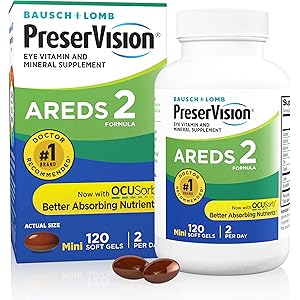Optimum Nutrition Micronized Creatine Monohydrate Powder, Unflavored, 120 Servings, 600 Grams (Packaging May Vary)
$27.99 (as of October 25, 2025 06:13 GMT +00:00 - More infoProduct prices and availability are accurate as of the date/time indicated and are subject to change. Any price and availability information displayed on [relevant Amazon Site(s), as applicable] at the time of purchase will apply to the purchase of this product.)Understanding UK Dietary Reference Values
The UK Dietary Reference Values (DRVs) are essential guidelines that provide recommendations for nutrient intake levels necessary for maintaining good health. These values are designed to inform both the general public and health professionals about the appropriate amounts of various nutrients that individuals should consume daily. The DRVs are crucial for planning diets that meet the nutritional needs of different population groups, ensuring that everyone can achieve optimal health through balanced nutrition.
Components of UK Dietary Reference Values
The UK DRVs consist of several components, including Reference Nutrient Intakes (RNIs), Lower Reference Nutrient Intakes (LRNIs), and Estimated Average Requirements (EARs). RNIs indicate the daily intake level sufficient to meet the nutrient requirements of nearly all (97.5%) healthy individuals in a specific age and gender group. In contrast, LRNIs represent the minimum intake level to prevent deficiency in the majority of individuals, while EARs estimate the average daily intake level needed to meet the requirements of half the healthy individuals in a group.
Importance of UK Dietary Reference Values
UK Dietary Reference Values play a vital role in public health nutrition. They serve as a benchmark for assessing dietary intake and nutritional status in populations. By understanding and utilizing these values, health professionals can identify dietary deficiencies and excesses, guiding interventions to improve overall health outcomes. Furthermore, the DRVs help inform food labeling, dietary guidelines, and nutrition education initiatives, promoting healthier eating habits across the UK.
How UK Dietary Reference Values are Established
The establishment of UK Dietary Reference Values involves extensive research and analysis of nutritional science. Expert committees review current scientific literature, considering factors such as age, gender, lifestyle, and health status to determine appropriate nutrient levels. This rigorous process ensures that the DRVs are based on the latest evidence and reflect the nutritional needs of the population, adapting to changes in dietary patterns and health trends over time.
Application of UK Dietary Reference Values in Diet Planning
When planning a balanced diet, individuals and health professionals can refer to the UK Dietary Reference Values to ensure that meals provide adequate nutrients. By incorporating foods that meet or exceed the DRVs for essential vitamins and minerals, one can promote better health and prevent nutritional deficiencies. This approach is particularly important for vulnerable groups, such as children, pregnant women, and the elderly, who may have specific dietary needs.
UK Dietary Reference Values for Specific Nutrients
Each nutrient has its own set of UK Dietary Reference Values tailored to the needs of different demographic groups. For example, the RNI for vitamin C is higher for smokers due to increased oxidative stress, while the RNI for calcium varies based on age and gender. Understanding these specific values allows individuals to make informed dietary choices that cater to their unique health requirements, ensuring they receive the necessary nutrients for optimal functioning.
Challenges in Meeting UK Dietary Reference Values
Despite the availability of UK Dietary Reference Values, many individuals struggle to meet these recommendations. Factors such as socioeconomic status, food availability, and cultural preferences can influence dietary choices, leading to imbalances in nutrient intake. Addressing these challenges requires targeted public health strategies that promote access to nutritious foods and educate individuals about the importance of adhering to the DRVs for better health outcomes.
Monitoring and Updating UK Dietary Reference Values
The UK Dietary Reference Values are not static; they are regularly reviewed and updated based on new scientific evidence and changing dietary patterns. This ongoing process ensures that the DRVs remain relevant and effective in guiding nutritional practices. Health organizations and researchers continuously monitor population dietary intake and health outcomes, providing valuable data that informs future revisions of the DRVs.
Resources for Understanding UK Dietary Reference Values
Various resources are available for individuals seeking to understand and apply UK Dietary Reference Values in their diets. Government health agencies, such as Public Health England, provide comprehensive guidelines and tools for assessing dietary intake. Additionally, nutritionists and dietitians can offer personalized advice based on the DRVs, helping individuals navigate their dietary choices effectively and healthily.
Conclusion on the Relevance of UK Dietary Reference Values
In summary, the UK Dietary Reference Values are a cornerstone of nutritional guidance in the UK. They provide essential information for individuals and health professionals alike, facilitating informed dietary choices that promote health and well-being. By understanding and utilizing these values, the population can work towards achieving optimal nutrition and preventing diet-related health issues.


